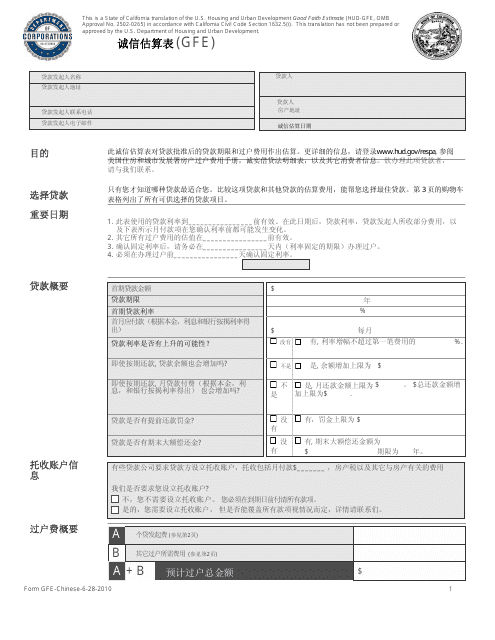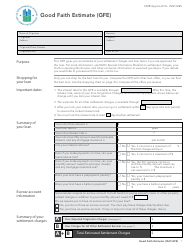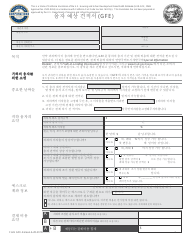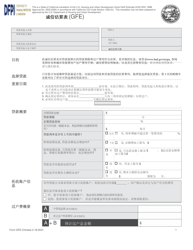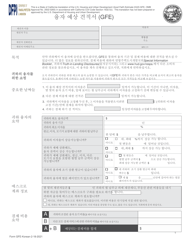Good Faith Estimate Form - California (Chinese)
This is a legal document that was released by the California Department of Financial Protection and Innovation - a government authority operating within California.
The document is provided in Chinese.
FAQ
Q: What is a Good Faith Estimate form?
A: The Good Faith Estimate form is used in California to provide an estimate of loan terms and closing costs to borrowers.
Q: Who uses the Good Faith Estimate form?
A: Lenders use the Good Faith Estimate form to disclose the estimated costs associated with a mortgage loan.
Q: What information does the Good Faith Estimate form include?
A: The Good Faith Estimate form includes information about loan terms, estimated closing costs, and other details related to the mortgage loan.
Q: Why is the Good Faith Estimate form important?
A: The Good Faith Estimate form helps borrowers understand the costs associated with their mortgage loan and compare offers from different lenders.
Q: Is the Good Faith Estimate form legally binding?
A: No, the Good Faith Estimate form is not legally binding. It is an estimate and actual costs may vary.
Q: Can the Good Faith Estimate form change?
A: Yes, the Good Faith Estimate form can change. If there are significant changes to the loan terms or closing costs, a revised form may be provided.
Q: When should I receive a Good Faith Estimate form?
A: You should receive a Good Faith Estimate form within three business days of applying for a mortgage loan.
Q: Can I use the Good Faith Estimate form to compare loan offers?
A: Yes, the Good Faith Estimate form can be used to compare loan offers from different lenders and help you make an informed decision.
Q: Are there any fees associated with obtaining a Good Faith Estimate form?
A: No, lenders are not allowed to charge any fees for providing a Good Faith Estimate form.
Form Details:
- Released on June 28, 2010;
- The latest edition currently provided by the California Department of Financial Protection and Innovation;
- Ready to use and print;
- Easy to customize;
- Compatible with most PDF-viewing applications;
Download a printable version of the form by clicking the link below or browse more documents and templates provided by the California Department of Financial Protection and Innovation.
